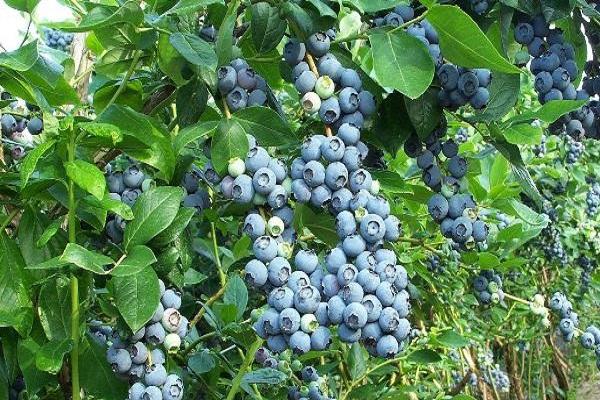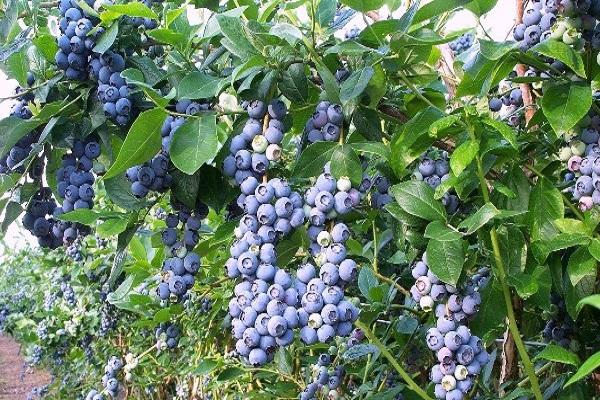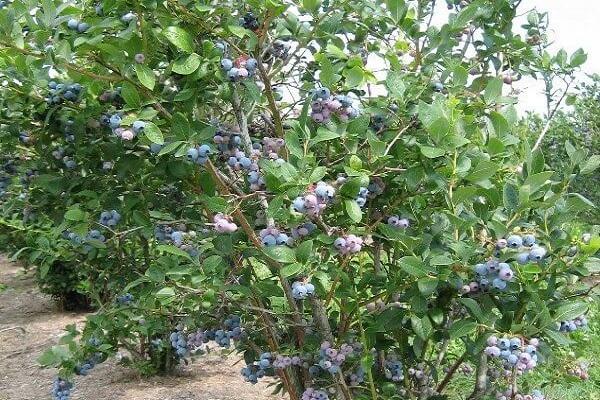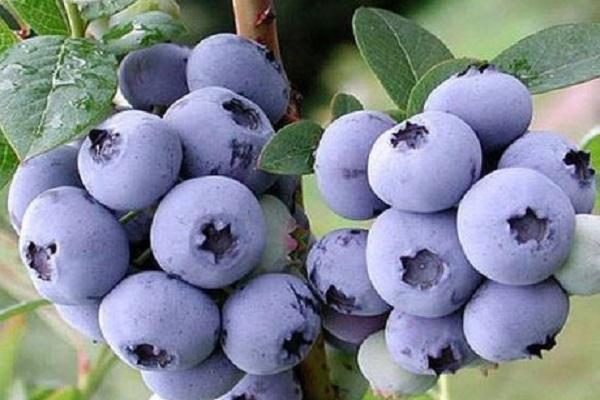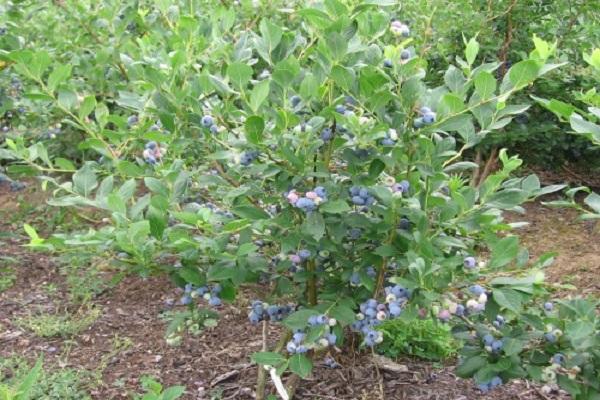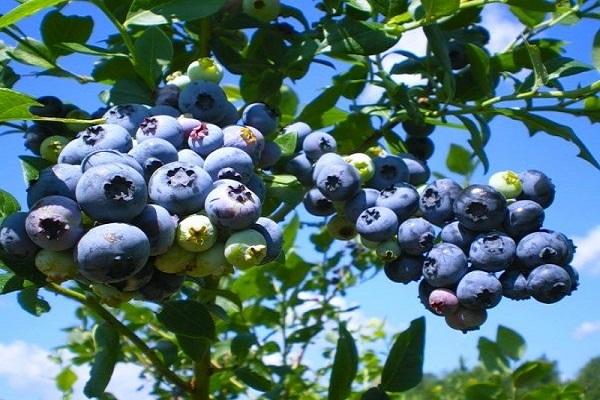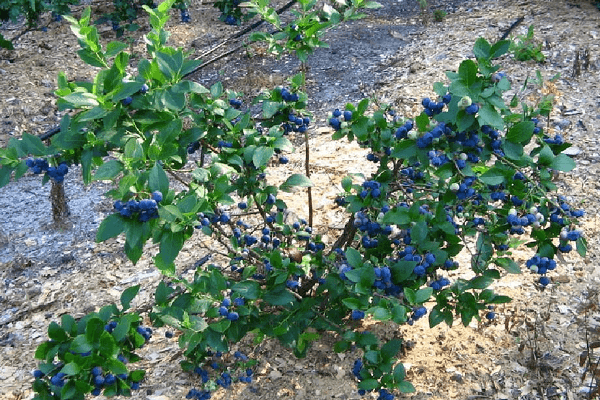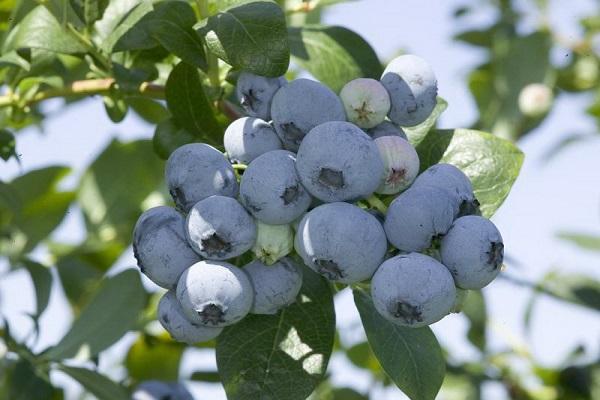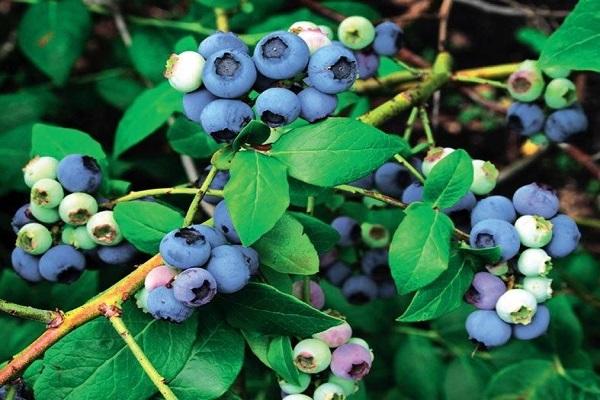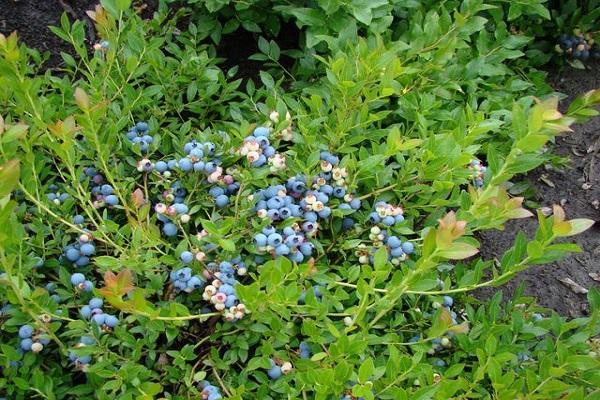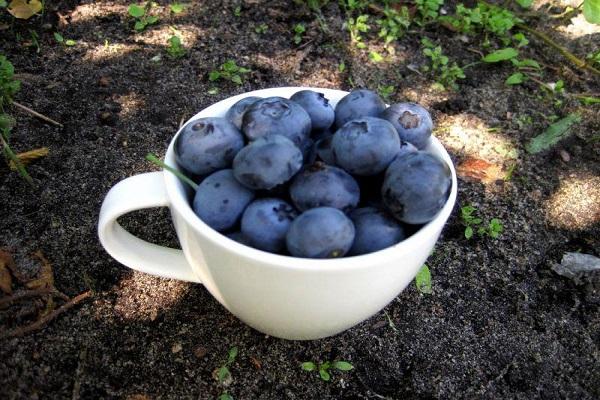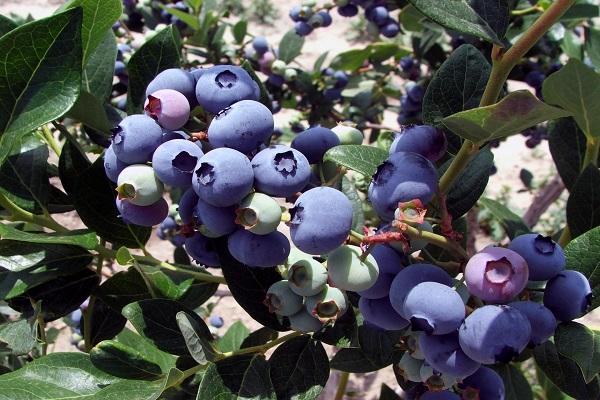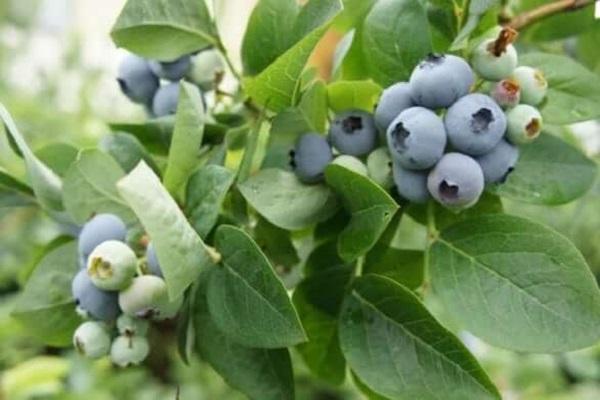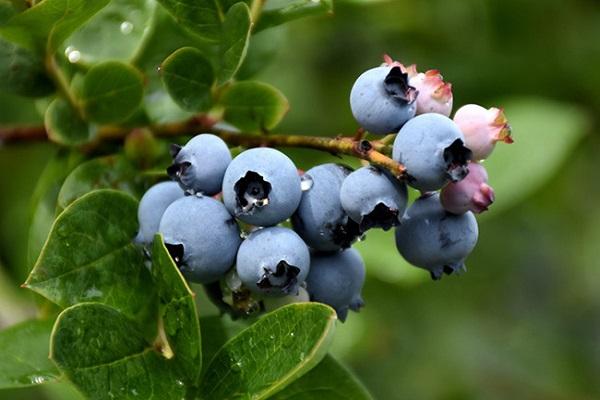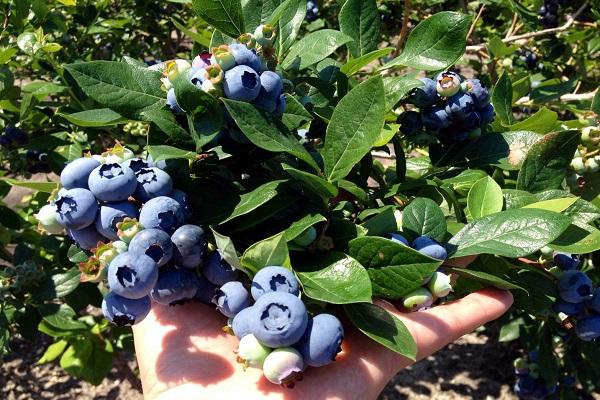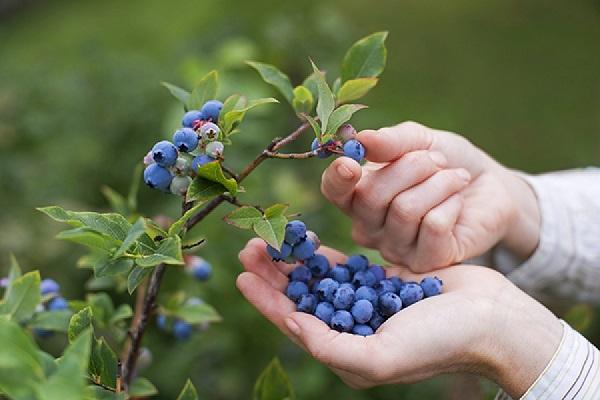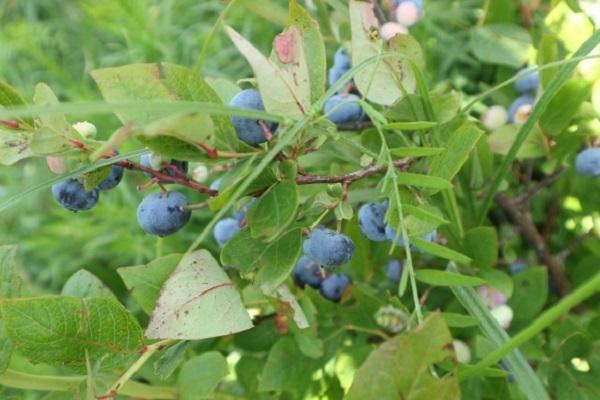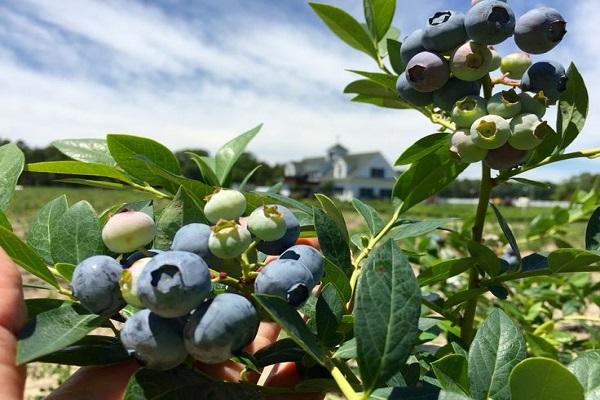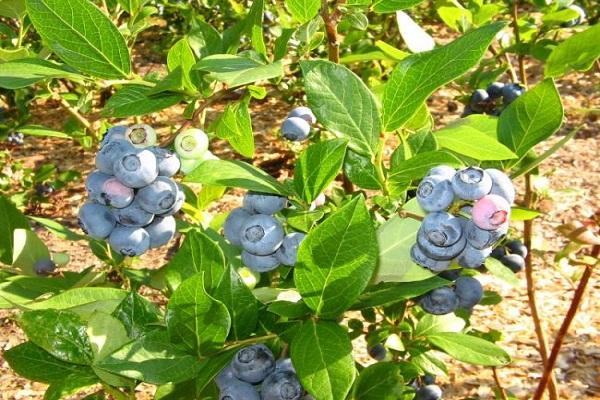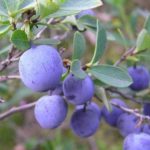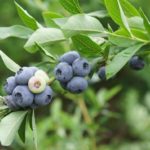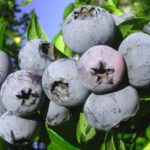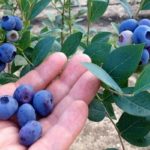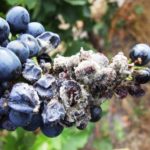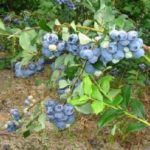When choosing varieties of garden blueberries, it is necessary to take into account their characteristics, climatic conditions in the growing region and the type of soil. An integrated approach to choosing a variety of berries will help you grow a good harvest and not encounter common problems.
- General description of garden varieties
- Agrotechnical features
- How to distinguish garden and wild blueberries?
- Early varieties
- Patriot
- Northland
- Chippewa
- Spartan
- River
- Sierra
- Alwar
- Sunrise
- Rubel
- Bleuetta
- Chanticleer
- Goldtraube
- Erliblue
- Blugold
- Blue Ray
- Centeclear
- Jersey
- Herbert
- Bluecrop
- Medium ripening varieties
- Denis Blue
- Legacy
- Kaz Plishka
- Polaris
- North
- Legation
- North blue
- Narrow-leaved
- XXL
- Taiga beauty
- Putte
- Bonus
- Aino
- North Country
- Bluejay
- Darrow
- Hardiblu
- Thoreau
- Pink lemonade
- Elizabeth
- Late varieties
- Nelson
- Berkeley
- Brigid blue
- Boniface
- Mid
- Jorma
- Elliot
- Growing blueberries in the regions
- North-West Russia
- Central Russia
- Ural
- Ukraine
- Belarus
- Planting blueberries
- Blueberry care
- Watering
- Top dressing
- Trimming
- Reproduction
- Pests and diseases of blueberries
General description of garden varieties
Most garden blueberry varieties are tall shrubs with many branches. Plants differ from other berry crops in their accelerated growth and rapid growth of shoots. The size of the fruit depends on the specific variety. The taste of garden blueberries is predominantly sweeter compared to wild forms..
Agrotechnical features
For each crop, there are individual cultivation methods aimed at obtaining a large harvest. Blueberry agricultural technology involves performing a set of measures, including preparing and fertilizing the soil, planting using a certain technology, further care and proper collection of berries.
How to distinguish garden and wild blueberries?
Garden and wild blueberries have a number of distinctive characteristics. Including:
- wild berries grow in swampy areas, and the cultivated form needs soil with high acidity;
- wild blueberry fruits are small and oval, and domestic berries are large-fruited, with fleshy pulp;
- garden berry bushes reach 2.5 m, and wild ones spread along the surface of the ground.
Early varieties
Early ripening berries should be planted in regions with short, warm summers. In this way, it will be possible to harvest before the first autumn frosts.
Patriot
The early variety Patriot has short bushes with active branching and powerful growth force.The yield from each bush is 7-9 kg. Fruits with a diameter of up to 19 mm are valued for their juicy pulp and high taste.
Northland
The Northland variety, stable and easy to care for, is a low-growing bush that produces 4-5 kg of yield. The berries are medium size, with thin skin.
Chippewa
Chippewa variety bushes reach a height of 0.8-1 m. The yield with proper care is 2-2.5 kg. The berries are large, light blue in color, resistant to frost and temperature changes.
Spartan
The productive variety Spartan begins to bear fruit in mid-summer. From one bush it is possible to collect up to 6 kg. The taste of the berries is tart-sweet, the size is 16-18 mm in diameter.
River
The New Zealand variety Reka ripens from the second ten days of July. Fruiting is regular, yield reaches 10 kg per bush. The berries have dense pulp and a pronounced aroma.
Sierra
Sierra blueberries produce large, versatile berries. The bushes are vigorous, about 2 m high, spreading. The leaves are large and acquire a red tint in autumn, which gives the Sierra plantings decorative properties.
Alwar
The medium-sized variety Alvar bears large fruits with dense and sweet pulp. The berries ripen in early August, and fruiting lasts 2-3 weeks. The harvest is suitable for long-term freezing and fresh storage.
Sunrise
The early ripening Sunrise variety bears fruit in mid-summer. Fruiting lasts for several weeks. The yield is 6-8 kg. The period of greatest productivity occurs in the 5-6th year of development.
Rubel
Bushes of the Rubel variety are erect, dense and tall. The yield from each bush is 5-7 kg. The berries, 12-15 mm in diameter, have a flattened shape and dense flesh.The fruits are sweet, with slight sourness and a pronounced aroma.
Bleuetta
Blewett's blueberries ripen in the second half of July. From flowering to fruit formation, 42-50 days pass. The berries are dark blue in color, with a slight waxy coating, and spherical in shape.
Chanticleer
The widespread Chanticleer variety is suitable for planting in summer cottages and on an industrial scale. The height of the bushes reaches 1.6 m. The ripening of the crop occurs smoothly, and the harvest does not drag on for a long period.
Goldtraube
Goldtraube blueberries bring 2.5-3.5 kg per bush. Goldtraub berries are light blue, tasty and sweet, and frost-resistant. The ripening period occurs in early August.
Erliblue
One of the sweetest varieties, Erliblue, produces 4-7 kg of fruit from each bush. The plants are medium-sized, 1.2-1.8 m high. Erliblue does not need frequent pruning, which simplifies care.
Blugold
Bluegold blueberries are included in the category of tall plantings. The plants have decorative properties and during the flowering period are covered with pale pink flowers.
Blue Ray
Bushes of the Bluray variety are erect, spreading, with a height of 1.2 m. Bluray blueberries regularly bring a good harvest of 5-8 kg per bush. The variety is easily propagated using lignified cuttings.
Centeclear
Plants of the Chenteclear variety with ascending branches reach a height of 1.6 m. Flowering begins after spring frosts. The fruits are medium-sized, sweet, with a slight sourness.
Jersey
The self-pollinating Jersey variety bears fruit in mid-August. From one bush it is possible to collect 4-6 kg of berries. The fruits are pale blue, round in shape, with dense pulp.
Herbert
The Herbert variety is a powerful bush up to 2.2 m high.Blueberries easily propagate and ripen in quantities of 5-9 kg per plant. After ripening, the fruits do not fall off and the skin does not crack.
Bluecrop
Bluecrop blueberries are valued for their high yield, which reaches 9 kg per planting. The fruiting period extends from the end of July until the first days of September. From the moment of flowering to the ripening of the first berries, about 55 days pass.
Medium ripening varieties
Mid-ripening varieties ripen after the early ones, which allows you to extend the period of berry consumption. Such varieties should be grown in places with a temperate or warm climate.
Denis Blue
The Denis Blue variety with a medium ripening period is distinguished by friendly fruiting. The yield is high and reaches 7 kg if agrotechnical practices are followed. Harvest occurs in mid-July - early August.
Legacy
Tall blueberry Legacy bears 12 kg of fruit. The bushes are dense, upright, reaching a height of up to 2 m. The crop has a universal purpose, including fresh consumption, processing and long-term storage.
Kaz Plishka
The Kaz Plishka variety, bred by Polish breeders, has hard shoots and spherical fruits. The berries begin to ripen in the second half of July. The pulp is aromatic and is used for dessert. The shedding of plantings is minimal, which allows mechanized collection.
Polaris
The yield of the Polaris variety is 6-7 kg. The taste is sweet, balanced, with pronounced sourness. The bushes are compact and low. Polaris blueberries are suitable for growing in summer cottages or on an industrial scale.
North
The productive, self-fertile variety Nord is a compact bush no more than 1 m high. The berries are large, with a diameter of 18-20 mm.The ripening period occurs at the beginning of July.
Legation
Legation blueberries consistently produce a yield of 4.5-6 kg per plant. The ripening process lasts from mid-July to early August. The berries are small, with high taste characteristics. The harvest is suitable for processing, storage and fresh consumption.
North blue
The mid-season North Blue hybrid is valued for its abundant harvest and exquisite taste. The plants are winter-hardy and suitable for planting in harsh climates. Care for this variety is standard.
Narrow-leaved
The narrow-leaved blueberry variety has low bushes, up to 0.5 m. The variety is distinguished by its ability to form new shoots from dormant buds. The plants are decorative and form inflorescences in the spring, immediately after the snow melts.
XXL
Perennial blueberry bushes XXL are adapted for growing in garden conditions in different climates. Large berries with a bluish bloom weigh 1 g each. The shape of the fruit is round, slightly flattened on both sides.
Taiga beauty
The Taiga Beauty variety is universal for cultivation and is suitable for growing in both the northern and southern regions of Russia. Thick clusters with rounded fruits form on the bushes, which gives a decorative appearance.
Putte
A low-growing variety that bears fruits weighing up to 1 g. The plants are erect, no more than 70 in height, with vertically formed branches. Putte is valued for its cold resistance, sweet taste and distinct aroma.
Bonus
Blueberry Bonus is included in the list of tall varieties with high resistance to cold weather. The berry actively bears fruit when grown in well-drained, light soil.
Aino
The medium-sized variety Aino forms stocky and wide shrubs about 85 cm high.Flowering begins in early June. Fruiting takes 2-3 weeks. The berries have a universal purpose - suitable for fresh consumption and freezing.
North Country
The North Country variety, which requires pollination, bears fruit in mid-July. The diameter of the berries varies between 10-15 mm, the shape is slightly flattened, and the taste is sweet. The advantages include: resistance to frost and diseases, unpretentiousness to the type of soil, abundant yield.
Bluejay
The yield of the Bluejay variety reaches 6 kg, provided proper care and a favorable climate. Ripening begins in mid-July and takes several weeks. Bluejah blueberries can be harvested mechanically.
Darrow
The Darrow variety of Canadian origin produces large berries with a pronounced aroma and sweet taste. To obtain a good harvest, cultivation in a well-lit area is required.
Hardiblu
Hardiblu blueberries are mid-season, ripening occurs in the first ten days of August. The yield per season reaches 7-9 kg. The fruits are small, 15-16 mm in diameter. Frost resistance is average, so shelter is required when grown in Belarus, central Russia and Siberia.
Thoreau
One of the most valuable varieties in the dessert category. Toro blueberries have a sweet taste and produce up to 9 kg of yield per mature bush. According to the description, the variety is suitable for mechanized harvesting, but it is better to do the first harvest yourself. Universal purpose - for processing, storage, fresh consumption.
Pink lemonade
The unusual Pink Lemonade variety has gained popularity due to its pink fruits with a sweet and sour taste. Pink Lemonade brings 3-4 kg of harvest per bush.Plants are often grown for decorative purposes.
Elizabeth
The Elizabeth variety is characterized by erect bushes that reach a height of 1.8 m. The spreading branches of the plantings intertwine and form a dense crown. It is possible to harvest up to 5 kg of harvest from one plant.
Late varieties
Late varieties should be grown in regions with long, warm summers. As a rule, bushes grow and bear fruit best in the south of the country.
Nelson
Bushes of the Nelson variety reach a height of 1.3-1.6 m. The shoots are powerful and rigid, the shape of the plants is round and spreading. The yield is 5-6 kg.
Berkeley
A vigorous and spreading variety of Berkeley berry is suitable for individual and industrial cultivation. The bushes reach a height of 1.8-2.1 m and produce 4-8 kg of harvest. The fruits begin to ripen in mid-August.
Brigid blue
Garden blueberries called Brigitte blue develop well in moist soil and sunny areas. Fruiting begins from the 4th year of life and is about 6 kg from each planting.
Boniface
Boniface blueberries grow on tall bushes with strong, erect branches. The fruit size is medium or large, the shape is round. The ripening process begins at the end of July.
Mid
The Mider variety is valued for its active growth and increased resistance to pests and diseases. Shrubs up to 2 m high are grown as fruit and ornamental plants.
Jorma
Jorma bushes reach a height of about 1.5 m. The fruits are juicy and large, ripening throughout August. The frost resistance of the variety is -27 degrees.
Elliot
The Elliot variety, which produces up to 8 kg of harvest, is valued for its rapid ripening, which begins in the third ten days of August.Eliot bushes are tall, upright, with vertical branches.
Growing blueberries in the regions
The yield indicator and the specific development of blueberry bushes are largely influenced by the conditions of the region. The climate and weather in a particular area, as well as the type of soil, often become important criteria when choosing a variety for cultivation.
North-West Russia
In the North-West of the country, including the Leningrad region, it is recommended to plant exclusively early and mid-ripening varieties. Restrictions are associated with short, warm summers. Planting berries with a long ripening period can lead to crop loss due to frost.
Central Russia
In the middle zone, it is advisable to grow blueberries, which begin to bear fruit in mid-summer. Experienced gardeners prefer new varieties, for example, Country, Rancocas, Finnish. This choice is explained by increased frost resistance, down to -30 degrees below zero.
Ural
Growing blueberries in the Urals is common among gardeners. The region's climate is well suited for winter-hardy berry crops, which allows for a consistently large harvest.
Ukraine
In Ukraine, blueberries grow in wetlands and rocky scree. Gardeners are actively propagating the crop in their summer cottages. The country's climate allows you to grow a large number of varieties without encountering difficulties.
Belarus
In most cases, gardeners grow mid-season varieties of blueberries in Belarus. The climatic conditions of the country provide the opportunity to collect the entire harvest before the first autumn cold snap.
Planting blueberries
When planting seedlings, just follow simple step-by-step instructions. It includes the following steps:
- Before planting, the roots of the seedlings are soaked in water for 10-20 minutes.
- A planting hole is dug at the site, the bottom of which is treated with peat or sawdust. To acidify the soil, use sulfur or malic acid.
- Prepared seedlings are placed in holes and the roots are carefully straightened.
- The root collar is deepened by 5 cm.
Blueberry care
The key to obtaining a healthy and large harvest is compliance with agricultural practices and regular care of plantings. Garden blueberries need basic care, which should include irrigation, fertilization, formation of bushes, and preventive spraying against pests and diseases.
Watering
At your dacha, the bushes should be watered 2 times a week, using a bucket of water for each plant. Irrigation is best done in the evening, after sunset. From the moment of fruiting and the formation of new flower buds, more abundant watering is allowed. Depending on the amount of precipitation and the rate of liquid absorption by plant roots, the frequency of irrigation can be adjusted. It is important to avoid lack of water at the roots, as this can lead to their drying out and reduced yield..
Top dressing
They begin to fertilize the berry crop from the second year of life. In spring, shrubs are fed with mineral fertilizers twice - when the buds swell and 1.5 months after the first application. In autumn, phosphorus fertilizers are used, which plants need after harvesting.
It is also necessary to periodically acidify the soil. To do this, you can treat with vinegar solution, citric or malic acid.
Trimming
The formation of bushes involves removing old leaves, damaged and dry branches. It is recommended to prune the plantings in the spring, after the risk of return frosts has disappeared. You can also prune in the fall 2-3 weeks before the onset of cold weather. In the case of autumn formation of young seedlings, the use of covering material may be required.
Reproduction
The most common way to propagate berries is to use lignified cuttings. For propagation purposes, shoots are harvested in winter, when they are dormant. Annual shoots that are tied into bunches and stored in the refrigerator or under snow cover are ideal.
In the spring, cuttings no longer than 15 cm are cut from harvested shoots. The lower cut is made oblique, and the upper cut is made horizontal. Then the lower base is dipped in a growth stimulator and deepened into the ground in prepared beds. The rooting procedure is recommended to be carried out in greenhouse conditions.
Pests and diseases of blueberries
Despite the resistance of blueberries to diseases, unfavorable environmental conditions or violation of care rules can provoke the development of infections. Powdery mildew, gray rot, anthracnose and moniliosis are dangerous for berry crops. The consequences of diseases can be eliminated and the risk of reoccurrence can be reduced by treating with fungicidal preparations.
Among the harmful insects, blueberries are affected by moths, beetles, and leaf rollers. You can notice signs of pest infestation by the appearance of spots and holes on the foliage and stem. To prevent the loss of a large amount of crops, you should regularly inspect the plantings and take protective measures immediately after detecting parasites.Large insects can be removed manually, but to combat the rest, spraying with insecticides is required.

